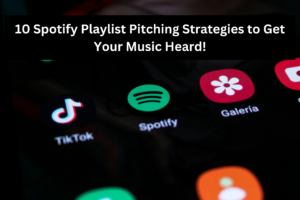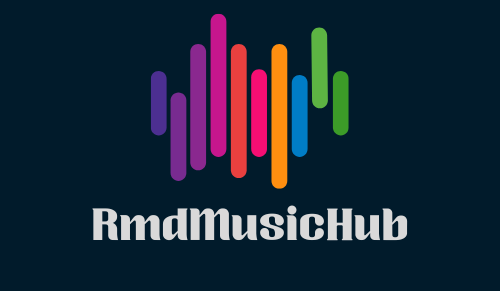Spotify playlists have become a cornerstone for independent artists looking to grow their audience and gain recognition. With millions of users relying on curated playlists to discover new music, getting your tracks onto these playlists can open doors to a broader fanbase and opportunities in the music industry. However, with so many artists competing for placement, standing out requires strategy.
In this article, we’ll dive into 10 Spotify playlist pitching strategies that can help get your music heard.
1. Perfect Your Track Before Pitching
Before even considering playlist pitching, ensure your song is high-quality, well-mixed, and professionally mastered. Playlists feature songs that blend seamlessly with others, and a poorly mixed track will stand out for the wrong reasons. Work with a trusted producer or audio engineer to ensure your music meets industry standards.
2. Optimize Your Spotify Artist Profile
Your Spotify artist profile is your online resume. Make sure it’s complete and engaging:
- Add a compelling artist bio that tells your story.
- Upload high-quality profile and cover images.
- Regularly update your “Artist Pick” with your latest releases or favorite tracks.
- Utilize Spotify’s “Canvas” feature to create engaging visuals for your songs.
A polished profile gives curators confidence in your professionalism and boosts your credibility.
3. Pitch to Spotify for Artists
Spotify allows artists to pitch their unreleased music directly through the Spotify for Artists dashboard. Here are some tips:
- Submit early: Submit your track at least a week before release to ensure it’s considered.
- Be specific: Provide detailed information about your song, such as genre, mood, and instruments used. This helps Spotify’s algorithm recommend it to the right curators.
- Use keywords: Mention similar artists or genres to align your music with specific playlist themes.
4. Identify the Right Playlists
Not all playlists are created equal. Research playlists that align with your genre, mood, and target audience. Focus on a mix of:
- Editorial playlists curated by Spotify.
- Independent playlists managed by individual curators or brands.
- Algorithmic playlists like Release Radar and Discover Weekly.
Tools like Chartmetric, SpotOnTrack, and PlaylistSupply can help identify playlists and curators in your niche.
5. Build Relationships with Independent Curators
Many playlists on Spotify are managed by independent curators. To reach them:
- Search for their contact information on social media or their playlist description.
- Personalize your message; show that you’ve researched their playlist and explain why your song fits.
- Don’t mass-email; build genuine relationships.
Independent curators can be your gateway to reaching smaller, niche audiences, which often translates into loyal listeners.
6. Leverage Social Media
Social media is a powerful tool for connecting with playlist curators. Here’s how:
- Follow curators on platforms like Instagram, Twitter, or LinkedIn.
- Engage with their content by liking, commenting, and sharing.
- DM them with a professional yet friendly pitch, including your track’s Spotify link.
Remember, curators receive many requests, so keep your communication respectful and concise.
7. Collaborate with Artists in Your Genre
Collaborating with artists in your genre can help you tap into new audiences and playlist opportunities. You can:
- Feature other artists on your track to increase its reach.
- Co-pitch collaborative songs to playlists where both artists’ styles fit.
- Share playlist connections to benefit from each other’s networks.
Collaborations often spark interest and provide additional validation for your music.
8. Create Your Own Playlists
If you can’t get onto existing playlists, create your own! Curate a playlist with:
- A mix of your songs and tracks by similar artists.
- A theme or mood that resonates with your target audience.
- Consistent promotion on your social media channels.
Encourage your fans to follow the playlist. Over time, it can grow into a valuable tool for gaining streams and visibility.
9. Engage with Fans and Encourage Saves
The Spotify algorithm rewards engagement. Here’s how you can leverage this:
- Ask fans to save your song to their library, as this boosts your algorithmic ranking.
- Encourage listeners to add your track to their personal playlists.
- Promote your music on platforms like TikTok, Instagram Reels, and YouTube Shorts to drive traffic to Spotify.
The more engagement your song receives, the more likely it is to appear in algorithmic playlists.
10. Analyze and Adapt
Data is your friend. Use Spotify for Artists and other analytics tools to track your song’s performance:
- Identify where your streams are coming from.
- Note which playlists are driving the most engagement.
- Adjust your pitching strategy based on what works.
Experimentation is key. As you learn more about what resonates with curators and listeners, refine your approach to maximize your reach.
Conclusion
Getting your music onto Spotify playlists requires more than just luck—it’s about strategy, persistence, and building relationships. By optimizing your profile, targeting the right playlists, and engaging with curators and fans, you can significantly increase your chances of being heard. Remember, success doesn’t happen overnight, so stay patient and consistent in your efforts.
Start implementing these strategies today, and watch as your music gains the recognition it deserves. Happy pitching!



